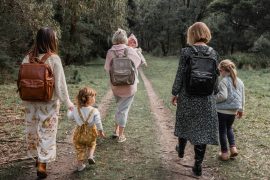By Kylee Harris
Does your child ever wonder about the origins of your town’s street names? Have they ever asked you if there were any historical personalities that once lived in your area? Perhaps it’s time to dig into the history of your community with your little one. Helping your child to know more about the past may benefit them since they’ll be able to form a basic understanding of history in all its complexity, and have a better grasp of the subject once they’re older.
Encouraging children to pick up historical knowledge at home is a must, especially now that there’s an ongoing decline in the study of history in Australian universities. According to recent research, the number of history academics in the country has dropped by 31 percent since 1989. This may result in having fewer history teachers in the future, and lower quality of history education. Experts believe that children should be taught local history by their parents to foster self-awareness and identity, and learn how life has evolved over time. Here are some fun ideas to get your child engaged with the history of your local community.
Experts believe that children should be taught local history by their parents to foster self-awareness and identity, and learn how life has evolved over time.
Go on a Discovery Walk
Children love to go on excursions, especially if the trips involve games. So why not get your child interested in your town’s history by going on a discovery walk? Ask your child to bring a small notebook and a pen or pencil, then go on a walk around your town. Instruct them to take notice of everything that’s around them, then let them write the descriptions of anything that catches their eye. For instance, if you pass by a building with an interesting architectural design, let them write down the name of the building, what it looks like, and if there are any remarkable things around it, such as a statue or a survey marker. Next, help them dig deeper by doing some simple research together. You can find out when that style of architecture design was popular, and learn how to decode the symbols on the survey marker so you’ll know about the structure’s boundaries and features.
If you’re new to your neighbourhood, see if there’s a local expert who does walking tours of your community, then sign up for a historical tour. Check if there’s minimal space between key sites so that your child won’t get too tired, bored, or hungry during the walking tour. Encourage your child to ask questions and let them take pictures and videos, but see to it that they don’t spend the entire tour glued to their phone.











